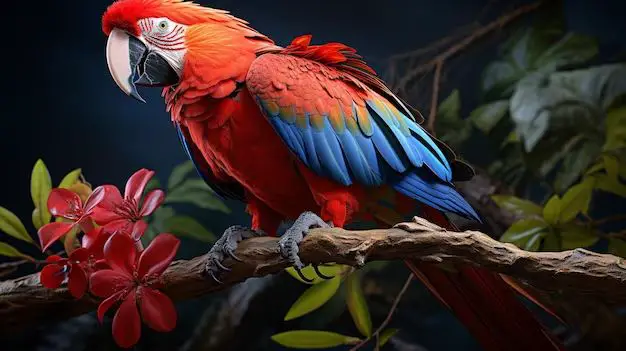Parrots are known for their bright, vibrant plumage. Their red, yellow, green, blue and multicolored feathers make them stand out among other bird species. But are parrots born with these colorful feathers or do they develop them over time? The answer is that parrots are naturally colorful from birth due to genetic and evolutionary factors.
The brilliant plumage of parrots serves important purposes. Their bright colors help parrots communicate, attract mates and blend into their environment. While not all parrot species are vividly colored, the majority of them have some unique and noticeable feather pigmentation. By examining how parrots develop color, what purposes it serves and how their colors compare to other birds, we can understand why parrots come with their hallmark rainbow hues.
How Parrots Develop Color
Parrots are born with their full complement of feathers. Baby parrots hatch from the egg fully covered in a layer of down feathers. As they grow, their juvenile plumage starts to emerge within a couple weeks. This early feather coat contains the unique coloration pattern that will be present throughout the parrot’s life.
The specific colors and pigments of parrots’ feathers are determined by genetics. Through the process of evolution over millions of years, ancestral parrots developed color variations that helped them adapt and survive. Beneficial traits were passed on to future generations. Over time, this led to modern parrot species displaying the bright, complex plumage patterns we observe today.
The genes that control feather pigmentation in parrots have been mapped. Scientists have identified the presence of psittacofulvin pigments, unique to parrots, that produce the red, orange and yellow colors. Other genes contain instructions for melanin production which forms darker black, brown and grey shades. The combination and distribution of these pigments leads to the brilliant palette of parrot plumage.
Purposes of Parrot Coloration
The vibrant colors of parrots serve several important functions that have developed through natural selection over time. Here are some of the ways their colorful feathers are beneficial:
Camouflage
– Bright plumage helps parrots blend into their tropical forest environments. The vivid reds, greens and yellows provide camouflage in the canopy.
Signaling
– Distinctive feather patterns help parrots recognize others of their own species. Color indicates age, sex and relationships.
Mate Attraction
– Bright colors are used to attract potential mates. Male parrots often have more vivid plumage to appeal to females.
Protection
– The bold patterns may serve as a warning to predators that parrots have toxins or foul taste.
| Purpose | Description |
|---|---|
| Camouflage | Blends into forest environments |
| Signaling | Identifies species, age, sex |
| Mate Attraction | Attracts potential mates |
| Protection | Warn predators of toxins |
Comparison to Other Bird Colors
Parrots have a wider range of bright colors than most other bird species. While other birds may display brilliant plumage, parrots stand out for their variety of vivid reds, oranges, yellows, greens, blues and multicolored patterns.
The closest comparison is to another order of birds, the passerines. Passerines include songbirds, such as tanagers, birds-of-paradise and flamingos. They also can exhibit striking red, orange, yellow and pink coloration. However, parrots display these warm bright tones to a greater degree across multiple body areas.
In contrast, birds-of-prey and waterfowl more commonly have whites, blacks, browns, greys and muted tones. Their coloration is useful as camouflage when hunting. Parrots’ vivid palette offers more visual signaling power to communicate and attract mates. Warm colors also blend better amid tropical vegetation.
While some other birds contain a similar intensity of colors, parrots excel in displaying multi-hued patterns over their entire bodies. The combination of varied colors in patches, bands and stripes contributes to their dazzling rainbow plumage.
Conclusion
In summary, parrots are naturally colorful birds due to genetic and evolutionary factors. Their bright plumage develops early and serves important purposes like camouflage, signaling, mate attraction and warning predators. While other birds can have brilliant feathers, parrots stand out for their variety of vivid warm hues and multi-colored patterns that cover their whole bodies. When you see a parrot’s rainbow wings and tail, you’re observing millions of years of evolution in action. Their naturally colorful feathers are a key adaptation that has allowed these intelligent, social birds to thrive.


